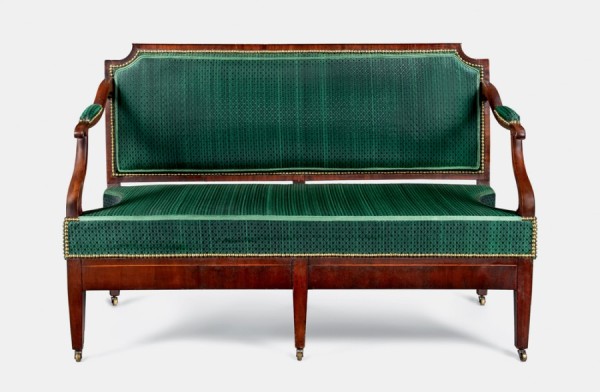
Thomas Burling, sofa, New York City, 1790. Mahogany and mahogany veneer with ash secondary. H. 38 1/2", W. 57 1/4", D. 27 1/2". (©Thomas Jefferson Foundation at Monticello; photo, Gavin Ashworth.)
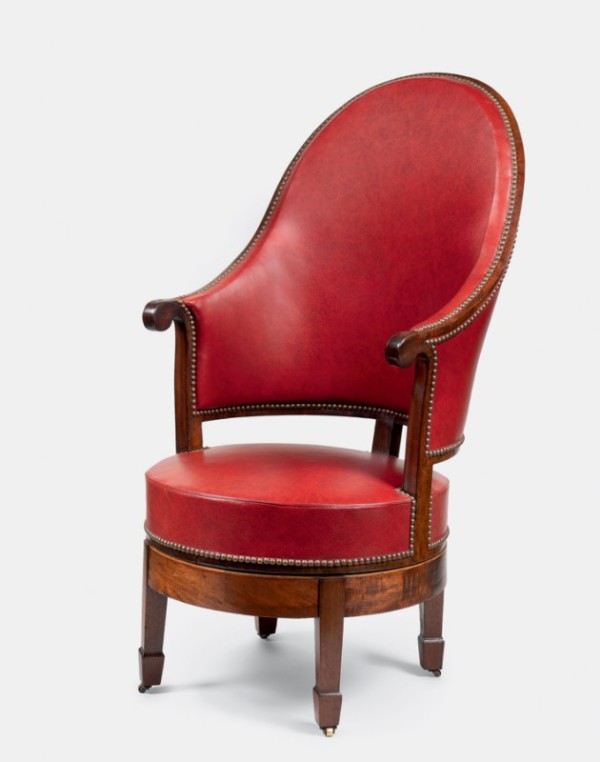
Thomas Burling, revolving armchair, New York City, 1790. Mahogany and mahogany with ash; iron and brass. H. 48", W. 25 7/8", D. 31". (©Thomas Jefferson Foundation at Monticello; photo, Gavin Ashworth.)
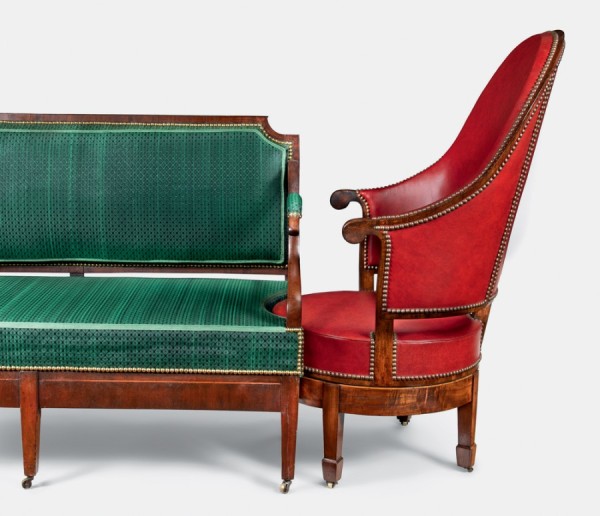
Detail showing the sofa illustrated in fig. 1 adjacent to the armchair illustrated in fig. 2. Burling made these pieces so that their banding and seat heights aligned.
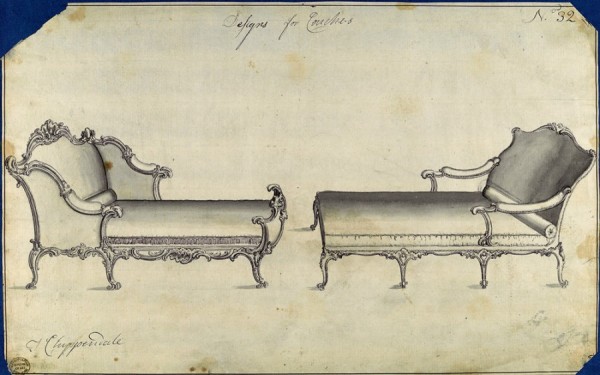
Thomas Chippendale, Designs for Couches, London, 1761. Ink and gray wash on paper. 7 3/16" x 13 1/16". (Courtesy, Metropolitan Museum of Art, Rogers Fund, 1920). This is a preparatory drawing for the third edition of The Gentleman and Cabinet-Maker’s Director.
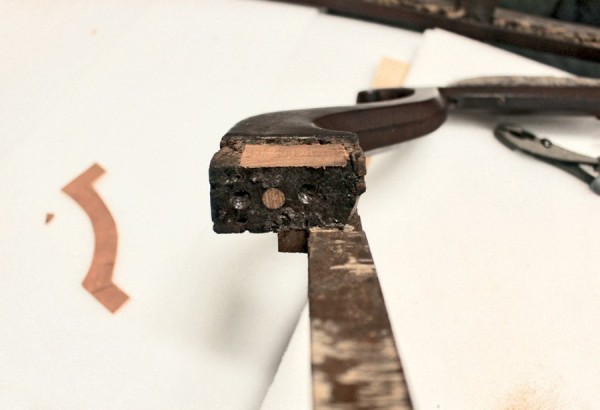
Detail showing the dowel construction used for the arms of the sofa illustrated in fig. 1. (Photo, Leroy Graves.) Conservator Leroy Graves repaired the previously damaged arm.
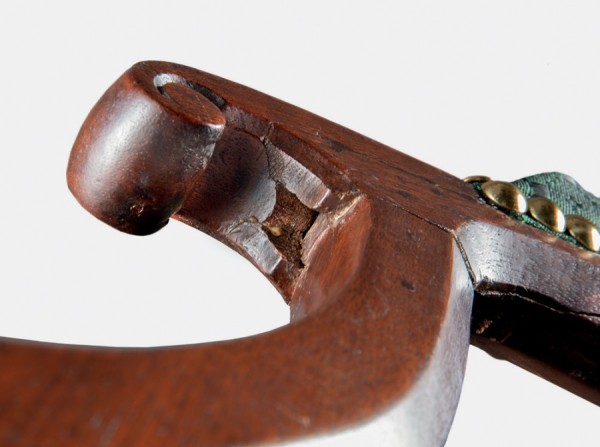
Detail showing an arm of the sofa illustrated in fig. 1, reinstalled after conservation. (Photo, Leroy Graves.)
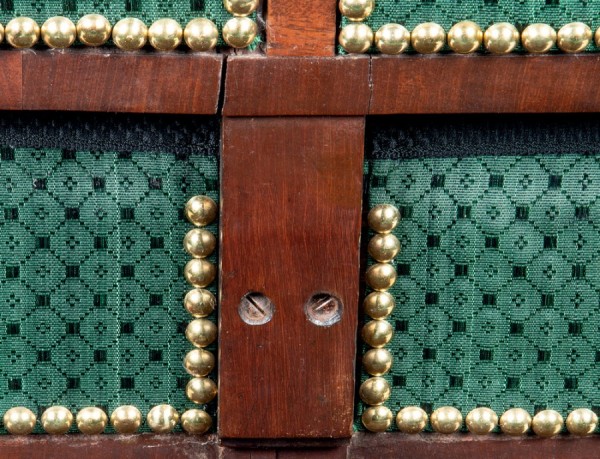
Detail showing how the back of the sofa illustrated in fig. 1 is screwed to the rear seat rail. (Photo, Gavin Ashworth.)
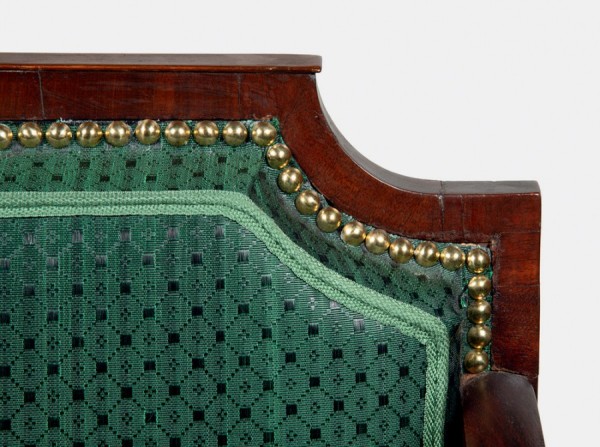
Detail showing the crest of the sofa illustrated in fig. 1. (Photo, Gavin Ashworth.)
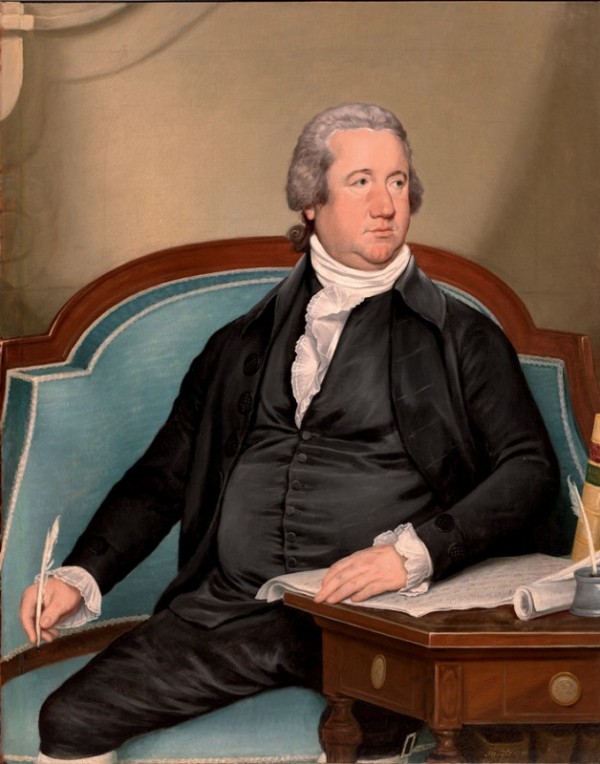
Joseph Wright, Frederick Augustus Conrad Muhlenberg, New York, 1790. Oil on canvas. 47 1/6" x 37". (Courtesy, National Portrait Gallery, Smithsonian Institution.) Wright’s careful rendering of the speaker’s chair provides important evidence for the appearance of the cock-beading and box-edge upholstery on Jefferson’s sofa.
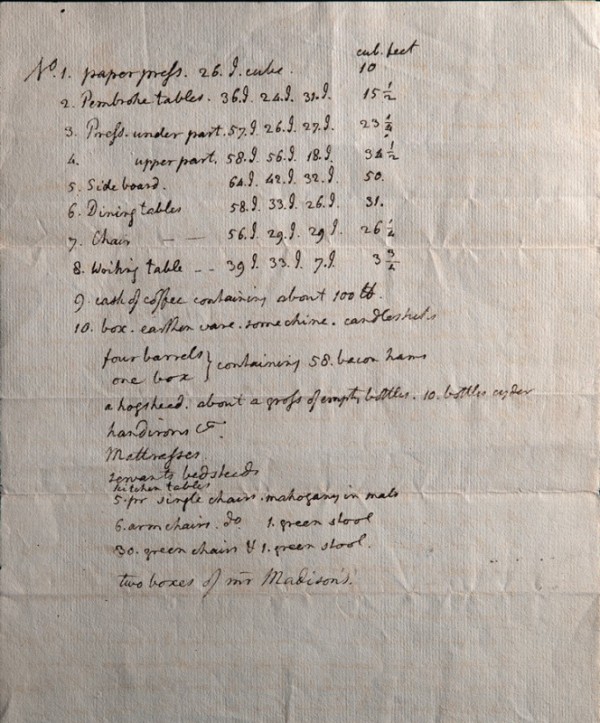
Thomas Jefferson, packing list, New York, August 31, 1790. Pen and ink on paper. (©Thomas Jefferson Foundation at Monticello.) During the move, Jefferson itemized a list of crates and boxes that conveyed his furniture and household goods from New York to Philadelphia.
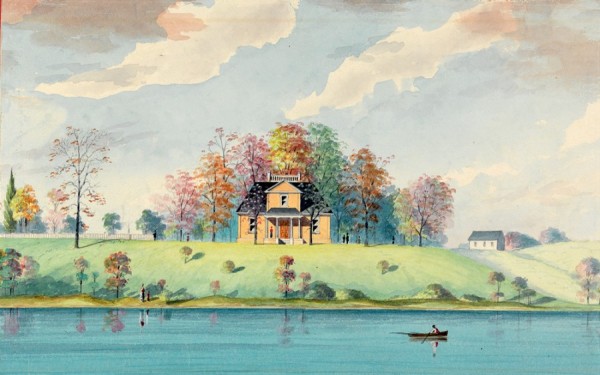
David J. Kennedy, Residence of Thomas Jefferson in 1793, Philadelphia, Pennsylvania, undated. (Courtesy, Historical Society of Pennsylvania.)
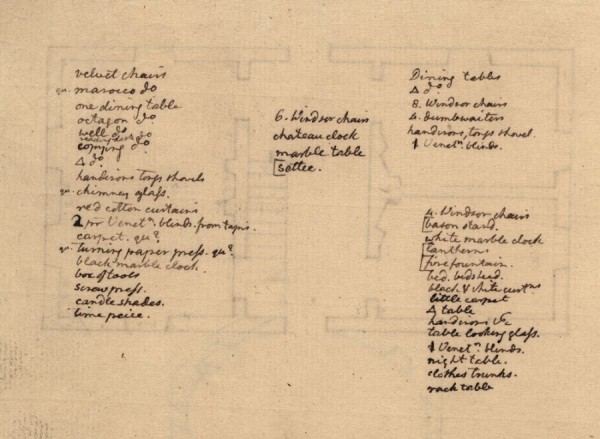
Thomas Jefferson, floor plan for the house at Gray’s Ferry, Philadelphia, Pennsylvania (verso), 1793. (Courtesy, Massachusetts Historical Society, Coolidge Collection of Manuscripts.) You can see the outlines of the rooms through the paper, indicating Jefferson’s intentions for which furnishings in which spaces. The settee appears at the bottom of the middle column.
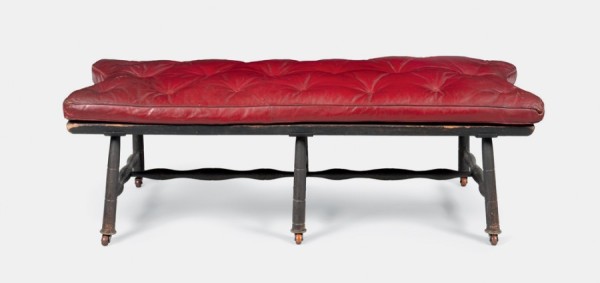
Lawrence Allwine, Windsor bench, Philadelphia, Pennsylvania, 1798. Maple, tulip poplar, white pine, and unidentified ringporous hardwood. H. 18 1/2", W. 25 1/4", D. 55". (©Thomas Jefferson Foundation at Monticello; photo, Gavin Ashworth.)
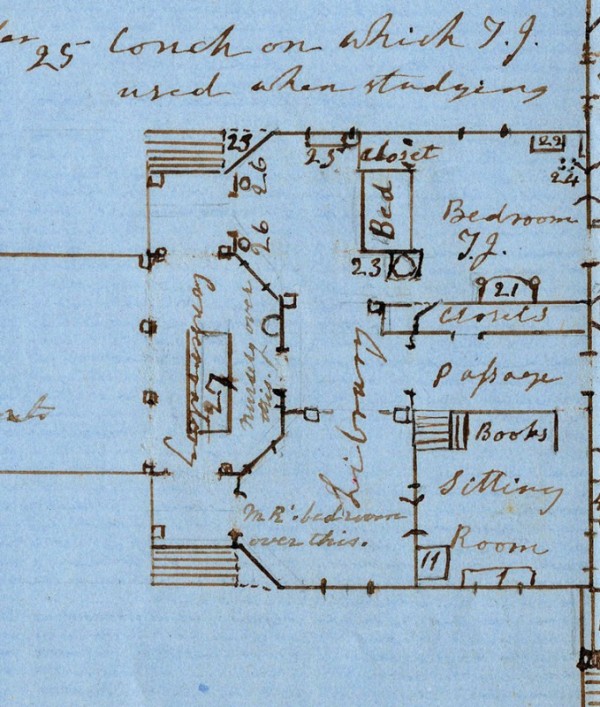
Cornelia Randolph, details of plan for the first floor of Monticello showing Jefferson’s private suite, Monticello, Albemarle County, Virginia, ca. 1826. (Courtesy, University of Virginia Library.)
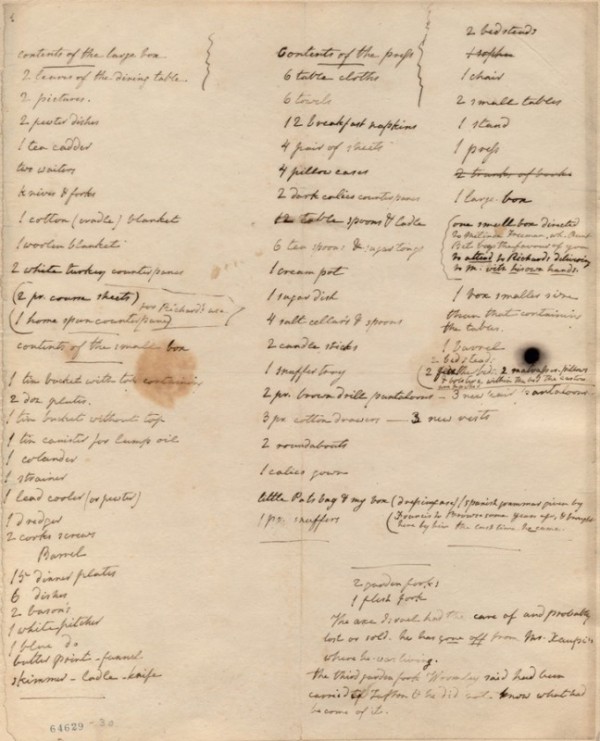
Virginia Randolph Trist, inventory of items sent from Monticello to Washington, D.C., 1829. (Courtesy, Library of Congress, Nicholas Philip Trist Papers.) The “sopha” appears in the top right corner of the list.
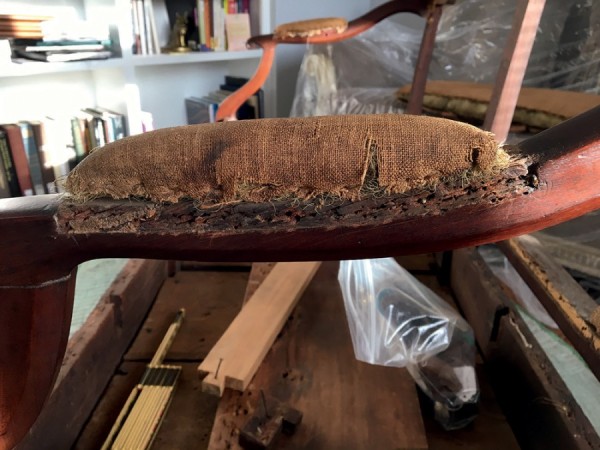
Detail showing an arm pad of the sofa illustrated in fig. 1. (Photo, Leroy Graves.)
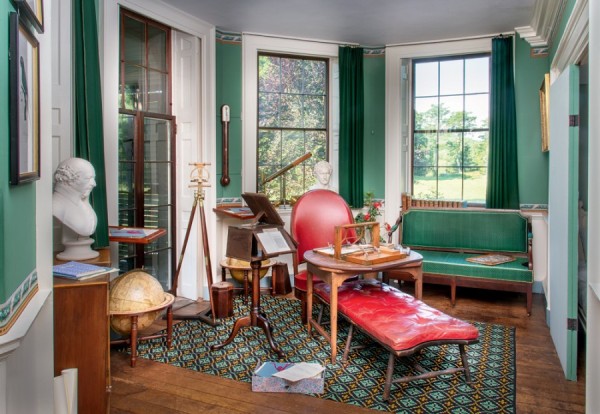
Cabinet, Monticello, Albemarle County, Virginia. (©Thomas Jefferson Foundation at Monticello; photo, Gavin Ashworth.)
